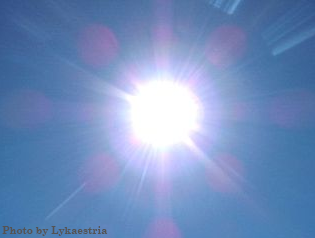How To Increase Your Chickens Egg Production With Cool Water
A fresh supply of clean water is critical to maintaining a flock’s
health and their ability to lay eggs. This is particularly true during
the summer months when chickens require additional water to regulate their body
temperature and ward off heat stress.
The below table shows the impact of increasing environmental
temperatures on chickens.
Temperature
(°F)
|
Impact1
|
52 -
79
|
Normal
production.
|
79 -
82
|
Reduced
feeding.
|
82 -
90
|
Lower
food and water intake. Reduced eggs/thinner shells.
|
90 -
95
|
Onset
of panting.
|
95 -
104
|
Birds
experience heat stress.
|
+104
|
Temperature
can cause death.
|
Water Temperature & Egg
Production
The importance of a plentiful supply of water is well understood
by most backyard chicken owners. What is less well known is that the
temperature of the water supply can also have an impact on a chicken’s water
consumption and, importantly, on the quantity of eggs it lays.
Research done on White Leghorn hens2 compared the
performance of chickens given water at 95º Fahrenheit (33º C) and those
provided with water that had been cooled to water 36º Fahrenheit (2º C).
The chickens given cool water produced 15% more eggs than those given warmer water.
A similar study3 conducted on Hy-line Brown hens, showed that the cool water
positively impacted egg production, even when the differences in temperature
were less extreme. In this second study, one group of birds was given
water at 73º F (23º C) and the second at 61º F (16º C). The study showed
that the group receiving cool water produced 8% more eggs than those given
warmer water.
Advice for Backyard Flock Owners
Hens that are given ample supplies of cool water produce more
eggs. This suggests that backyard flock owners can improve their egg
yields during the summer by taking a few steps to ensure that their birds have
a plentiful supply of cool water. Here are some simple strategies for
providing birds with cool water:
- Fill your chicken waterer with cold water in the
morning. If you have the option, re-fill with fresh clean water in
the afternoon.
- Place your waterer in a shaded
area to prevent sunlight from increasing the water temperature.
- Consider adding a few ice cubes to
the water on days when the temperature is especially hot.
- If using poultry nipples to dispense
water to your flock, use an insulated water vessel such as a commercial
cooler as a reservoir.
Posting sponsored by ChickenWaterer.com, makers of the BriteTap automatic poultry waterer. The BriteTap waterer shields water from dirt and poop. The water stays clean and there are no messy pans for you to wash out.
Sources:
1Kekeocha (1985) Poultry production handbook as cited in in the Corporate Document
Repository of the Food & Agricultural Organization of The United Nations.
2 Leeson &
Summers (1975) as cited in Commercial Meat & Egg Production by D. Bell, W. D. Veaver and M. O. North.
3 Gutierrez, Min
& Chang, Effects of Chilled Drinking Water on Performance of Laying
Hens during Constant High Ambient Temperature from
the Asian-Australasian Journal of Animal Science (May 2009).



Comments
Post a Comment